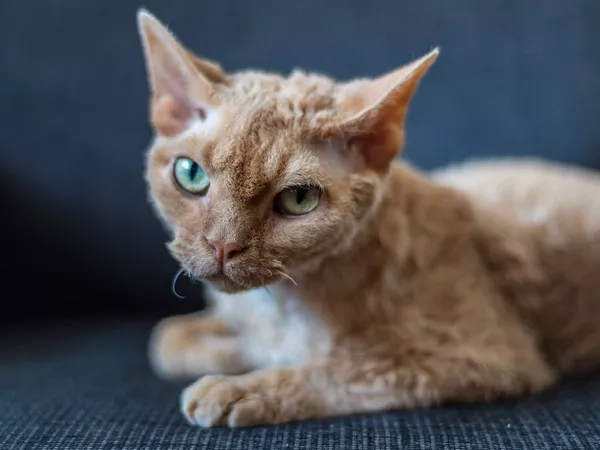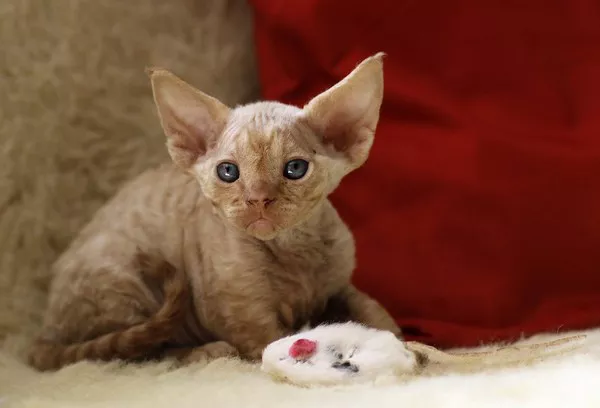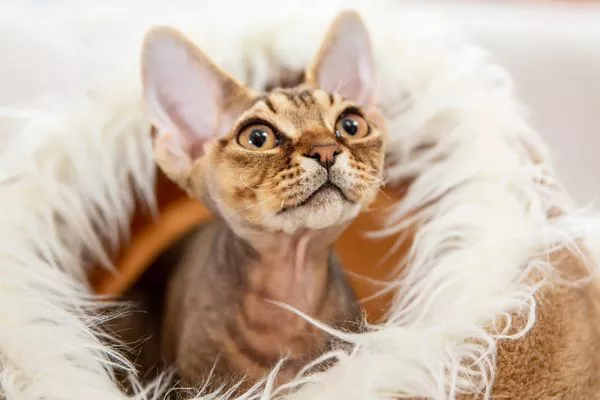The Devon Rex cat, with its distinct appearance and playful personality, is a beloved breed among cat enthusiasts worldwide. Known for its unique curly coat, large ears, and mischievous demeanor, the Devon Rex cat often captivates admirers with its striking features. One aspect of the Devon Rex’s appearance that has sparked curiosity is the color of its eyes. While many associate blue eyes with certain cat breeds, such as the Siamese or Ragdoll, the question remains: do all Devon Rex cats have blue eyes? In this comprehensive article, we will delve into the genetics, characteristics, and variations of eye color in Devon Rex cats to uncover the truth behind this feline mystery.
Understanding the Devon Rex Breed
History and Origins
The Devon Rex breed traces its origins to the county of Devonshire in England, where the first Devon Rex cat named Kirlee made its appearance in the 1960s. Believed to be the result of a genetic mutation, the Devon Rex quickly gained popularity for its unique appearance and endearing personality. Breeders selectively bred Devon Rex cats to preserve their distinctive traits, including their soft, curly coat, large ears, and slender build, while maintaining their playful and affectionate nature.
Physical Characteristics
Devon Rex cats are characterized by their distinctive features, which set them apart from other cat breeds. They have a short, wavy coat that feels soft and silky to the touch, reminiscent of a lamb’s fleece. Their large ears are set low on the head and may have tufts of fur at the tips. Devon Rex cats have an elegant, slender build with long legs and a whip-like tail. Their eyes are typically large and expressive, contributing to their engaging and animated appearance.
Eye Color in Devon Rex Cats
Variations in Eye Color
Contrary to popular belief, not all Devon Rex cats have blue eyes. While blue eyes are more commonly associated with certain cat breeds, eye color in Devon Rex cats can vary widely and is not determined solely by breed. Like other domestic cats, Devon Rex cats can have a range of eye colors, including blue, green, gold, amber, or a combination of hues. Eye color in cats is influenced by genetic factors, including the presence of specific genes that determine pigmentation and iris coloration.
Genetics of Eye Color
The genetics of eye color in cats is complex and involves multiple genes that interact to produce various phenotypes. The primary determinant of eye color is the presence of melanin, a pigment that gives color to the iris. The amount and distribution of melanin in the iris determine the resulting eye color, with more melanin resulting in darker colors such as brown or black and less melanin resulting in lighter colors such as blue or green. The inheritance of eye color in cats follows a polygenic pattern, meaning that multiple genes contribute to the trait, making it difficult to predict with certainty.
Blue Eyes in Devon Rex Cats
While blue eyes are commonly associated with certain cat breeds, such as the Siamese or Ragdoll, they are not exclusive to those breeds. Blue eyes in cats result from a lack of melanin in the iris, allowing the underlying collagen fibers to reflect light and appear blue. Some Devon Rex cats may inherit the genetic trait for blue eyes, resulting in striking blue-eyed individuals. However, blue eyes are not a defining characteristic of the breed, and many Devon Rex cats have eyes of other colors, including green, gold, or copper.
Factors Influencing Eye Color
Genetic Variation
Genetic variation plays a significant role in determining eye color in Devon Rex cats. Different combinations of genes inherited from the cat’s parents can result in a wide range of eye colors and patterns. Some genes may influence the production and distribution of melanin in the iris, while others may affect the structure and opacity of the eye, leading to variations in color and appearance.
Developmental Factors
Eye color in cats can also be influenced by developmental factors during kittenhood. The eyes of newborn kittens are typically blue due to the absence of melanin in the iris at birth. As the kittens grow and mature, melanin production increases, and the eyes may gradually change color over time. The final eye color may not be fully evident until the kitten reaches several months of age, as the iris undergoes further pigmentation and development.
Health and Genetics
In some cases, eye color changes in Devon Rex cats may be indicative of underlying health conditions or genetic abnormalities. Certain genetic disorders, such as albinism or heterochromia, can result in unusual eye colors or patterns, including complete or partial lack of pigmentation in one or both eyes. Additionally, eye color changes accompanied by other symptoms, such as eye discharge, redness, or cloudiness, may warrant further evaluation by a veterinarian to rule out potential health issues.
Conclusion
In conclusion, the idea that all Devon Rex cats have blue eyes is a common misconception. While blue eyes may occur in some individuals within the breed, eye color in Devon Rex cats can vary widely and is influenced by genetic, developmental, and environmental factors. Like other domestic cats, Devon Rex cats can have eyes of various colors, including blue, green, gold, amber, or a combination thereof. Understanding the complex genetics and factors that contribute to eye color in cats can help dispel myths and misconceptions surrounding this fascinating aspect of feline biology. Whether your Devon Rex cat has blue eyes, green eyes, or any other color, each cat is unique and beautiful in its own way, contributing to the diversity and charm of this beloved breed.

























